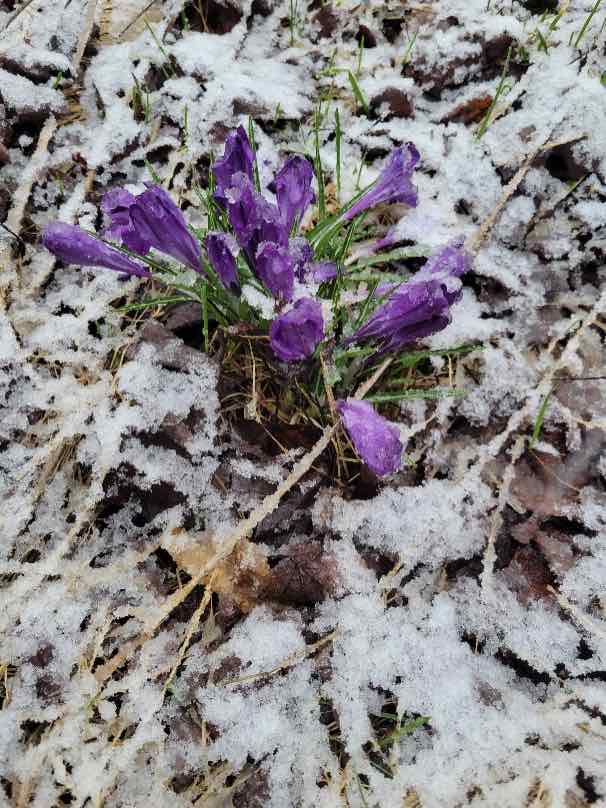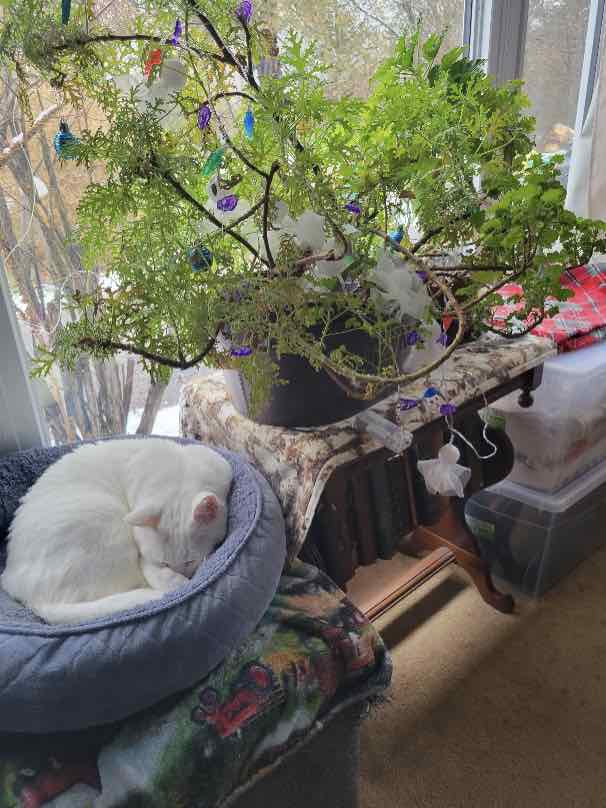Your cart is currently empty!
Twin Flower is Charming Groundcover
Twin flower is a charming evergreen creeping vine that forms large mats in moist, shady woods. Read our Quick Growth Guide.
Your cart is currently empty!
They have their little seed leaves (tomato cotyledons) waving at me and are all reaching for the light. I am continuing to leave them on their heated mat until they are ready to pot up to the next level.
Greetings fellow gardeners,
Spring? Sometimes weather happens. On Easter Monday I was able to putter about and even started my pruning chores. On Tuesday morning the temperature was dropping and there was snow. If you have bulbs blooming, don’t panic, as they will pull through.

So, I am inside fussing with my plant stand and organizing seeds. I have to get my small business organized and as well the 2023 calendar which needs to be finished by June. Our Horticultural Society has also taken on a big project as well; we are rejuvenating a park, with an emphasis on using native plantings and plants for pollinators. That is going to be an ongoing project. My work at the farm garden will be starting up soon and I have my volunteer duties with the Master Gardeners including advice tables and talks. I am enjoying this little snowy break.
I, like many of you, have been haunting my plant stand. Are the seeds up? Are they growing? What germinated and what did not? And the new plant stand protection has meant that nothing has been chewed by the too-many cats!
A Cotyledon is an embryonic leaf in seed-bearing plants, one or more of which are the first leaves to appear from a germinating seed. (Thank you Oxford Dictionary!) I am happy to report that eight out of the nine varieties of tomatoes I planted have germinated. They have their little seed leaves (Tomato cotyledons) waving at me and are all reaching for the light.
I am continuing to leave tomato seed pots with their cute cotyledons on their heated mat until they are ready to pot up to the next level. In the daytime I remove the cover as they are strong enough to be exposed to the air. I put the cover back on at night as the heat is turned off. Each day I mist them with water and watch very carefully for any insects that might have been hiding in the soil, as well as watching for mold and the dreaded damping-off. If my seedlings have good airflow I should have no issues with damping-off.

My next task is to prune all of my roses. The little buds are starting to appear so they will need to be pruned soon. I take out all of the dead branches and then check for airflow. Try not to take more than a third when you prune your roses. I also add a nice clump of compost around each rose to start them up and they will be put into my weekly feeding rotation when I start that in late May.
A number of dead sticks and plant material need to be removed, but I don’t like to disturb any over-wintering creatures. I carefully place these materials in a pile and leave them until the end of May so any creatures living there will have a chance to emerge as they see fit.
I am enjoying my little break and am grateful for the greenery of my scented geraniums. Spring is here, it is just shy.

Enjoy your week and watch that you don’t walk on your garden. Judith
(Email: sghorticultural@gmail.com) Veggie Bites are available at https://sghorticultural.wixsite.com/website or https://gardeningcalendar.ca/articles/veggie-bites/
Twin flower is a charming evergreen creeping vine that forms large mats in moist, shady woods. Read our Quick Growth Guide.
Black ash has a large natural area in the United States and Canada. These trees thrive in damp environments and are typically found in northern marshy forests.
Chamomile tea has long been used for a wide range of health issues. Chamomile is easy to grow, and you can produce it natural and pure.
How do you turn your passion for landscape photography into a job? A step-by-step guide on how to make money capturing the beauty of gardens in Toronto. Where to find a job as a landscape photographer?
Sunflowers are versatile plants that provide a long summer bloom for the perennial border or cutting garden.
Milkweed is required for a Monarch Waystation. Butterflies can feed on nectar plants, and can lay their eggs on milkweed in the area.
GardeningCalendar.ca gets some funding from advertisers. If you click on links and advertisements at no cost to you, the site may receive a small commission that helps fund its operation.
© 2025 J&S Calendars Ltd.
Leave a Reply
You must be logged in to post a comment.